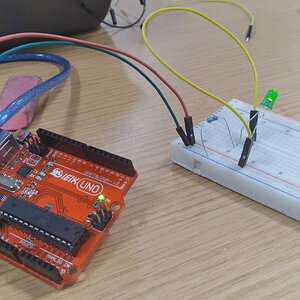- Joined
- Dec 11, 2006
- Messages
- 18,743
- Reaction score
- 8,047
- Location
- Mid-Atlantic US
- Website
- www.lewlortonphoto.com
- Can others edit my Photos
- Photos NOT OK to edit
I posted a version of this text below in a thread about a specific issue but thought it might be an interesting discussion issue.
________________________________________________________________________________________________
There are three levels of understanding in a picture.
The most obvious level is the documentary level - the picture contains stuff that you recognize
The next level down, also sort-of-obvious is that allusive level. The picture brings up ideas, emotions, reactions that come from the mind or memory of the viewer. An example of these are baby pictures, puppy, photojournalism pictures, etc. Clearly the viewer's experience and emotions contributes a lot to the enjoyment.
The lowest level - which is not obvious at all - is the responsive level. This is when the viewer perceives, often without conscious involvement, that the elements of the picture as they are do not conform with our rules of the accustomed reality and the viewer responds to that. This response can be positive or negative and is often completely without conscious awareness of it except in the viewer's general response. This deviation may be subtle, where it only engages the unconscious, or blatant where the viewer must consciously try to interpret what and how he/she is seeing and how to feel.
This is most easily demonstrated by the tilted horizon issue. If, in a standard ordinary landscape, the horizon is tilted, even a tiny bit, the image is somehow less comfortable to look at compared to to one where the horizon is horizontal as we are accustomed to see it.
On the other hand, if we see an image where the buildings exhibit extreme perspective distortion, as if we were looking up at them, there is a positive response that enhances the feeling of height.
The subtle, unconscious influences of this lowest responsive level are not easily understood or managed directly yet is the source of the 'Rules' or guidelines of composition. We are told to follow the guidelines - to keep our viewers' perception at its most comfortable- until we know enough to break them. That is, until we know enough about how people see to use these unconscious reactions to manage and increase the viewers' response to the image.
________________________________________________________________________________________________
There are three levels of understanding in a picture.
The most obvious level is the documentary level - the picture contains stuff that you recognize
The next level down, also sort-of-obvious is that allusive level. The picture brings up ideas, emotions, reactions that come from the mind or memory of the viewer. An example of these are baby pictures, puppy, photojournalism pictures, etc. Clearly the viewer's experience and emotions contributes a lot to the enjoyment.
The lowest level - which is not obvious at all - is the responsive level. This is when the viewer perceives, often without conscious involvement, that the elements of the picture as they are do not conform with our rules of the accustomed reality and the viewer responds to that. This response can be positive or negative and is often completely without conscious awareness of it except in the viewer's general response. This deviation may be subtle, where it only engages the unconscious, or blatant where the viewer must consciously try to interpret what and how he/she is seeing and how to feel.
This is most easily demonstrated by the tilted horizon issue. If, in a standard ordinary landscape, the horizon is tilted, even a tiny bit, the image is somehow less comfortable to look at compared to to one where the horizon is horizontal as we are accustomed to see it.
On the other hand, if we see an image where the buildings exhibit extreme perspective distortion, as if we were looking up at them, there is a positive response that enhances the feeling of height.
The subtle, unconscious influences of this lowest responsive level are not easily understood or managed directly yet is the source of the 'Rules' or guidelines of composition. We are told to follow the guidelines - to keep our viewers' perception at its most comfortable- until we know enough to break them. That is, until we know enough about how people see to use these unconscious reactions to manage and increase the viewers' response to the image.

![[No title]](/data/xfmg/thumbnail/38/38262-10a9668da9a2b36a92cddde57caf87bc.jpg?1619738547)



![[No title]](/data/xfmg/thumbnail/37/37604-7ad625e983f92f880eb65a264eeef5e4.jpg?1619738148)
![[No title]](/data/xfmg/thumbnail/37/37606-3c9ffb5906173fa2aa489341967e1468.jpg?1619738148)



![[No title]](/data/xfmg/thumbnail/40/40284-f59f6230f0d5b9eacf977f8b0392f087.jpg?1619739407)

